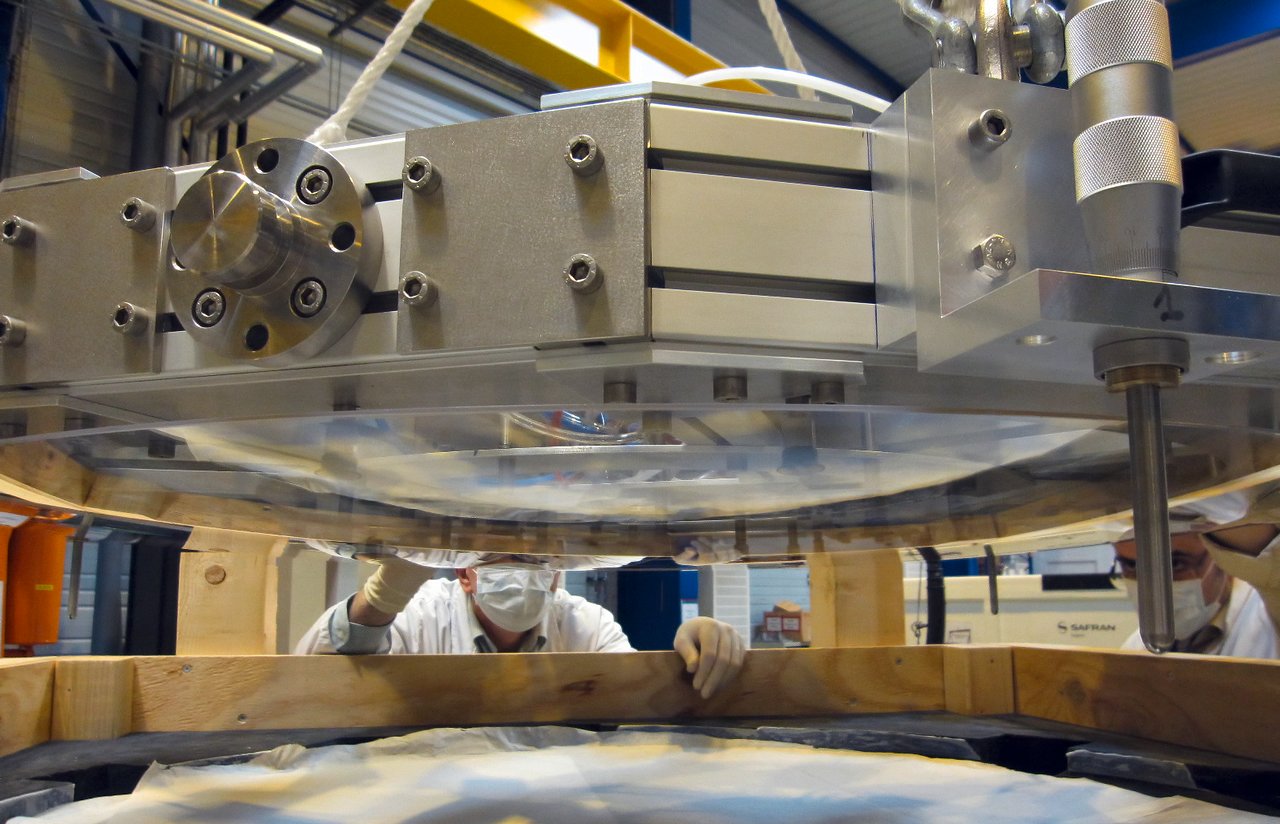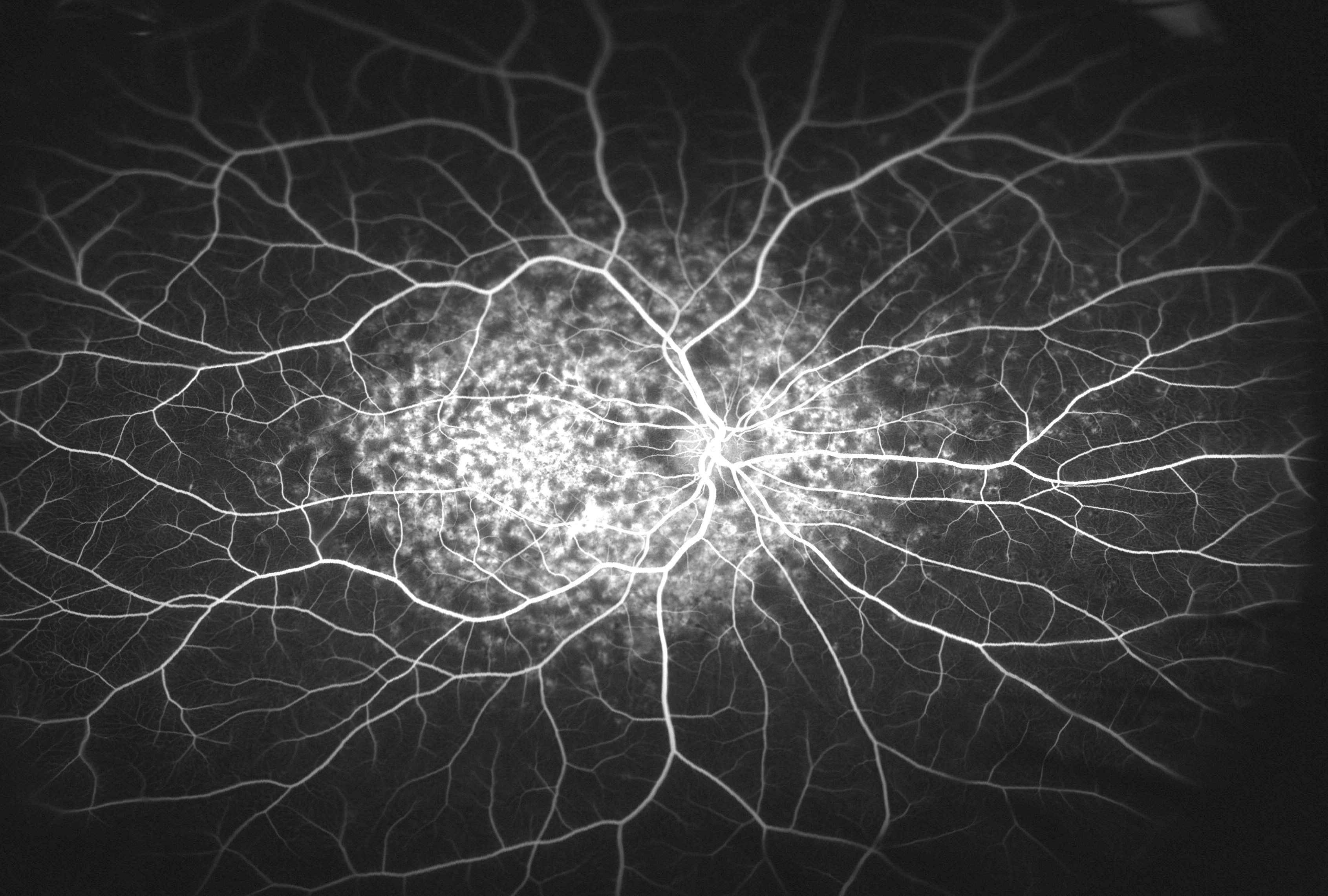
Adaptive optics technology is a versatile research tool that allows for the correction of light distortion in a variety of optical instruments. Courtesy of ESO.
Introduction to Adaptive Optics
Anyone who has ever driven down the road on a hot day has probably noticed steam radiating off the pavement. However, if you looked closely enough, the steam was actually never there at all. This commonly known mirage is actually light passing through heat rising off the road, bending and twisting as it travels. This example is also a magnified version of what happens to all light beams passing through the Earth’s atmosphere. As the light travels, it distorts, surpassing different layers of materials and atmospheres. So when observing stars, rather than light traveling a straight path from the star to Earth, it encounters the atmosphere. Gravity, temperature layers, and atmospheric turbulence, for example, are why stars seem to twinkle. This beautiful side effect, however, is a major problem for researchers in many fields of study.
Adaptive optics is a technology that allows for the improved performance of optical systems by reducing the distortion that occurs as light travels through various media. It achieves this by measuring the effects of rapidly changing optical distortion, then compensating for it through use of deformable mirrors or materials with variable refractive properties. Adaptive optics technology was originally developed as a classified concept for improving astronomical imaging in the 1950s. However, recent technological advances in charge-coupled device (CCD) cameras, frame grabbers, and micro-electro-mechanical systems (MEMS) deformable mirrors have led to innovations in fields like neuroscience, retinal imaging, and more.
Research Applications
Over time, adaptive optics technology has matured, exhibiting more affordable and sophisticated components and thus becoming a widespread research tool. Although the main uses are overwhelmingly in research, a major strength of the technology is its application versatility in many different fields. Today, it finds application in scientific fields including microscopy, bio-imaging, and retinal imaging.
Astronomy

The Very Large Telescope utilizes adaptive optics to compensate for atmospheric light distortion. Courtesy of the Paranal Observatory.
For instance, the ESO’s Paranal Observatory is home to the Very Large Telescope (VLT), the world’s most advanced visible-light astronomical observatory. The NACO instrument, an adaptive optics system implemented within the VLT, has led to over a decade of scientific results due to improved image quality. This instrument was integral for revealing the infrared glow of individual volcanoes on Jupiter’s moon. It also obtained some of the most detailed surface and weather maps of Titan, Saturn’s largest moon. Thanks to continuous updates over the years, this system remains one of the most outstanding adaptive optics instruments worldwide.
Microscopy
Although adaptive optics was traditionally developed for astronomy-related research, in more recent years, it has also been applied to microscopy applications. For example, Professor Martin Booth at the University of Oxford currently uses adaptive optics to correct wavefront aberrations introduced by tissue samples. By integrating this technology into various types of microscopes, he was able to improve image contrast and resolution when imaging deep within biological specimens.

Adaptive optics allows for higher quality and high-resolution imaging of biological specimens. Courtesy of the Dynamic Optics and Photonics Group at the University of Oxford.
In his research, Booth explains how aberrations present in an optical system severely compromise the imaging quality of high-resolution microscopes. Furthermore, these aberrations can lead to a reduced signal level and image resolution. He explains that while aberrations can be introduced through misalignment of optical components within the microscope, they are also commonly caused by the refractive index of the specimen itself. In addition to improved image contrast and resolution, correcting aberrations can result in faster imaging, reduced photobleaching and lower photo-toxicity.
Neuroscience
Recently, adaptive optics has also played a large role in other types of imaging, such as in vivo neurological bio-imaging. In the Ji research lab at Berkeley, researchers develop and apply novel imaging methods to understand the brain.
The functions of the brain arise from the interactions of neurons. Neurons, working as the fundamental computation units of the brain, communicate with one another through microscopic structures called synapses. Through different circuits and networking, these synapses specialize in various mental functions (Ji Lab, 2017). Understanding the brain requires sophisticated methods that can monitor single synapses along with the activities of large networks of neurons.
To image neurons and their networks in vivo, light has to travel through the brain. However, problems arise as imaging resolution is limited by refractive-index mismatches between medias. Similarly, imaging depth within the mammalian brain is ultimately limited by light scattering (Ji Lab, 2017). However, thanks to adaptive optics, the team has determined methods to rapidly measure distortions in scattering tissues and achieve corrections applicable over hundreds of microns inside a mouse brain.
Vision Science and Retinal Imaging
Vision science is yet another field where adaptive optics applies. Similar to biological specimens or the atmosphere, ocular aberrations also occur in the eye. These distortions in the wavefront pass through the pupil of the eye, decreasing the quality of the image formed on the retina. These types of light distortions are also the reason why people must commonly wear glasses or contact lenses.
Similarly, in the case of retinal imaging, light that passes out of the eye also has these types of distortions. This leads to the inability to see the microscopic structures of the retina, like cells and capillaries. In order to see these structures, it is also necessary to compensate for conditions like astigmatism and other aberrations.

The implementation of adaptive optics into retinal imaging led to some of the first images of retinal microvasculature. Courtesy of Ophthalmic Technician.
Retinal imaging was first introduced to adaptive optics to produce images of single cones within the living human eye. Since then, it has been used with scanning laser ophthalmoscopy (SLO) to produce some of the first images of retinal microvasculature. In combination with other technologies like optical coherence tomography, adaptive optics has allowed for the first 3D images of living cone photoreceptors. With the advances in retinal imaging, vision scientists are now using adaptive optics in efforts to detect and diagnose eye diseases.
Conclusion
In conclusion, adaptive optics is highly versatile in many different research areas. Its ability to correct distortions in various types of imaging has led to higher resolution, improved contrast, and faster imaging. Whether it’s visualizing cones within the human eye or astronomical object light years away, the expansion of this technology provides an invaluable tool for scientists to obtain a deeper insight on their samples.
